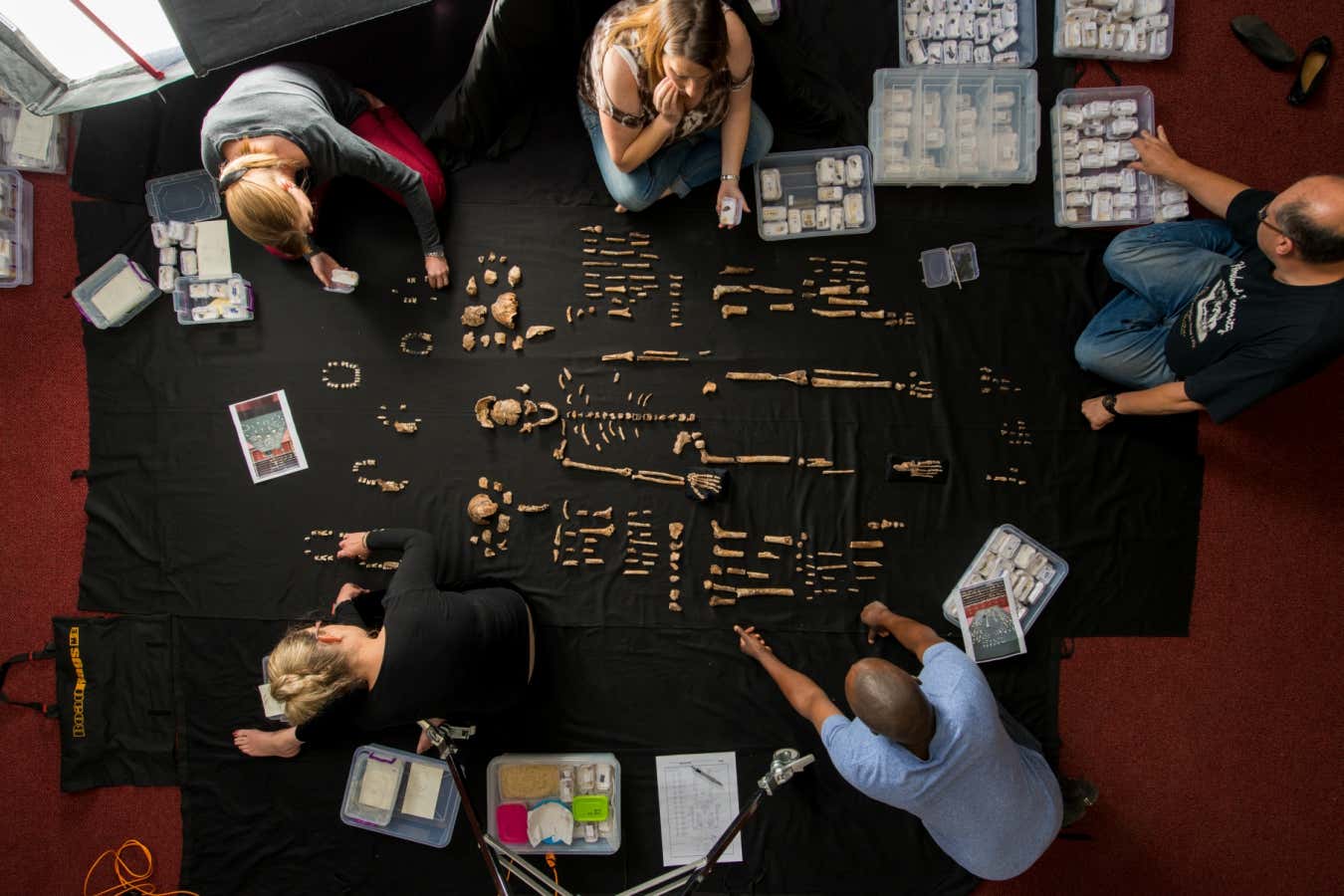New discoveries suggest that Homo naledi, an ancient and primitive hominin, may have displayed complex behaviour despite its small brain
By Alison George
5 June 2023
Fossils of Homo naledi
Robert Clark, National Geographic
A species of ancient human with a brain the size of a chimpanzee’s may have engraved symbols on cave walls and deliberately buried its dead. These new discoveries about Homo naledi, a supposedly primitive hominin, could potentially prompt a rethink of the origins of complex behaviours once thought to be only the domain of large-brained humans like us.
“It’s a remarkable thing. My mind is blown,” says Lee Berger at the National Geographic Society in Washington DC, who led the research. “Much of what we thought about the origin of intelligence and the cognitive powers of having a big brain clearly just died,” he says, though other researchers who spoke to New Scientist question this view.
Advertisement
H. naledi was discovered in 2013 in the Rising Star cave system in South Africa when two cavers squeezed through an incredibly tight passage into a hitherto-unexplored chamber littered with fossil bones. In 2015, it was declared that these belonged to a new species. We now know that this hominin was around 144 centimetres tall and had a mix of primitive and modern features, with a brain a third of the size of ours.
It isn’t yet known how H. naledi fits in the hominin family tree, but its morphology suggests that its common ancestor with Neanderthals and modern humans dates back a million years or more. Dating of its fossil remains in 2017 showed that it lived relatively recently, from 335,000 to at least 241,000 years ago, so might have met Homo sapiens, which evolved in Africa around 300,000 years ago.
In 2021, the discovery of an infant skull in a narrow fissure that is almost impossible to access indicated that this hominin deliberately interred its dead. The finding also implied that H. naledi must have been able to control fire in order to navigate through the labyrinth of dark passages and, in December last year, Berger announced evidence of extensive use of fire in the Rising Star cave system, such as soot, hearths and burnt bones.
